The girl was nearing her 28th birthday, hand in hand with her beau, who she’d been with for nearly three years. They had just moved in together, and were ready to take some time out, lost in the vigorous brushstrokes of Van Gogh Alive, and its genius. It was an immersive experience like no other that A had seen before, visited by 8 million people around the world. The couple pondered as to how the other art enthusiasts might have felt, a riot of colours, textures, and exhibits that were dying to be explored. It might have been small, as far as art exhibitions go, but for A to witness Van Gogh’s creativity in such a spellbinding, colourful, and majestic way, brought tears to her eyes. Her partner smiled at her, as she laughed, swept in an artistic fantasy. He knew that art could boost your mental health, but now he knew why.
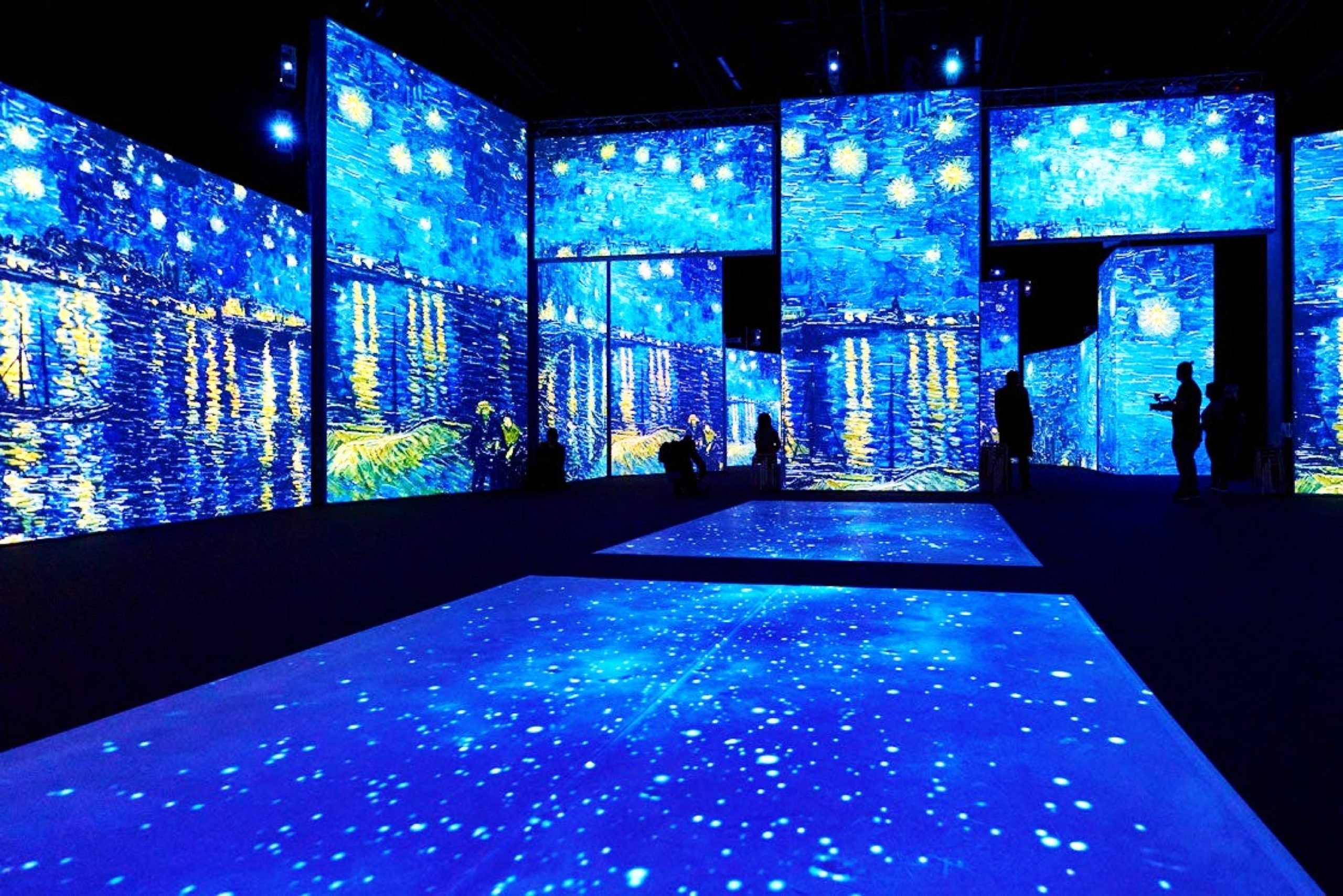
For this was no ordinary art exhibition, a celebration of an artist loved around the world. Who didn’t live to see his success, having only sold only one painting (‘The Red Vineyard”) in his lifetime. Today, Van Gogh is revered, like the creative icon he was, bursting into popularity after his death. But how did this icon reach dizzying heights when he was poorly regarded in his lifetime? His widow Van-Gogh Bonger, sold some of Vincent works, loaned out others for exhibitions, and published his letters to Theo. Without Jo’s dedication, we might have never got to experience the wonder that is Van Gogh’s art collection. With over 900 paintings produced between the ages of 27, and 37 (when he died, committing suicide), some of his greats include ‘The Starry Night’, ‘The Bedroom’ and ‘Almond Blossoms’.
But why is Van Gogh so famous in 2021, and how did he land the biggest art exhibition in the world? For starters, Van Gogh’s life story, entranced the nation. His expressive and emotive use of colour and distinct brushwork became hugely popular, and influenced Expressionism, Fauvism, and early Abstract Art. Regarded as the greatest Dutch painter since Rembrandt, he was a creative who taught A to appreciate art, to look beyond a painting, and find the meaning behind it. In A’s case, she related to Van Gogh’s story, a creative that was under looked, who had a burning passion, but struggled deeply with mental health issues. Like Van Gogh, she too had depression, and anxiety. For the first time, she was able to see an artist who eloquently captured the turbulence of mental health, drowning in visual soliloquies.
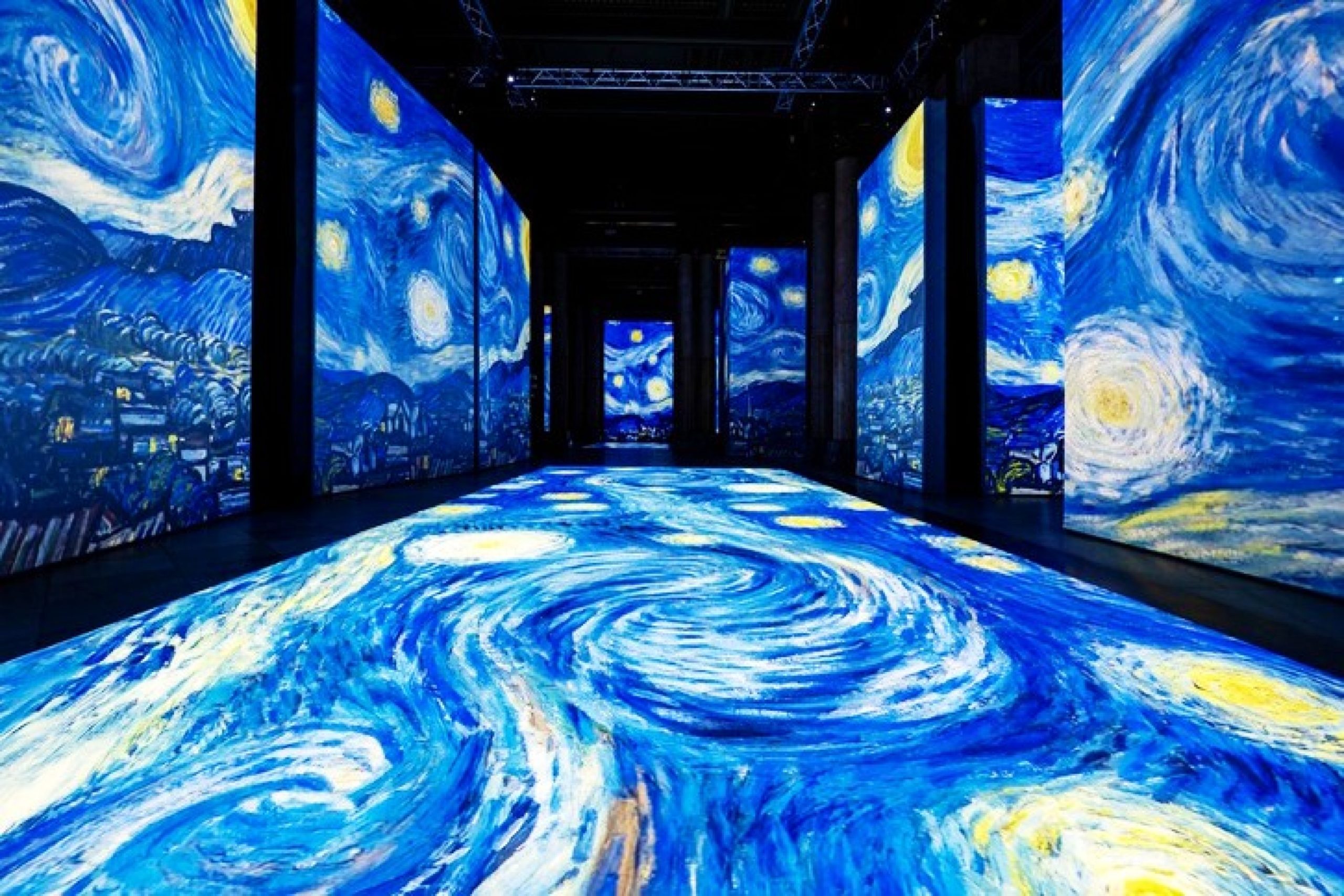
Which was why Van Gogh Alive was no ordinary art exhibition, a chance for A to meet her icon from beyond the grave, lost in his creative prowess. On a normal Sunday afternoon, they wandered peacefully through Kensington Gardens. Vibrant green parrots nibbling nuts from stranger’s hand’s, goslings furrowed in their mother swan’s crested breast. The trees rustled, it was pleasantly warm, a welcome omen for the artistic day ahead. Today, the couple would be trying something new together, A, an art lover, introducing her boo to one of her favourite artists. Nearing the steps, the large pavilion announced that it was the most visited multi-sensory experience in the world, paintings of Van Gogh, including a self-portrait blown up to extreme proportions. It was what he deserved after all. Was it any wonder that millions of art enthusiasts had felt the same, drawn into a world, where art held multi-layered meaning?
So how did this incredible immersive experience come to be? Created by Grande Experiences, Van Gogh Alive gave visitors the chance to immerse themselves in Van Gogh’s artistry, surrounded by a vibrant symphony of light, colour, sound and fragrance. From start to finish, you were spellbound, like a cat had caught your tongue, walking into Van Gogh’s paintings. It was almost like he was there with you, deliciously proud, 3,000 Van Gogh images magnified in a riotous triumph of artistry. No longer would aficionados lurk awkwardly in silent galleries, shushed if they dared ask questions. Instead, there was a juxtaposition between meditative contemplation, and excited chatter, a chance to find, educate, and feel tranquil, as you absorbed Van Gogh’s art. Adults, children and couples alike came alive here, viewing artworks from new angles, soaking up information with a keen focused eye.
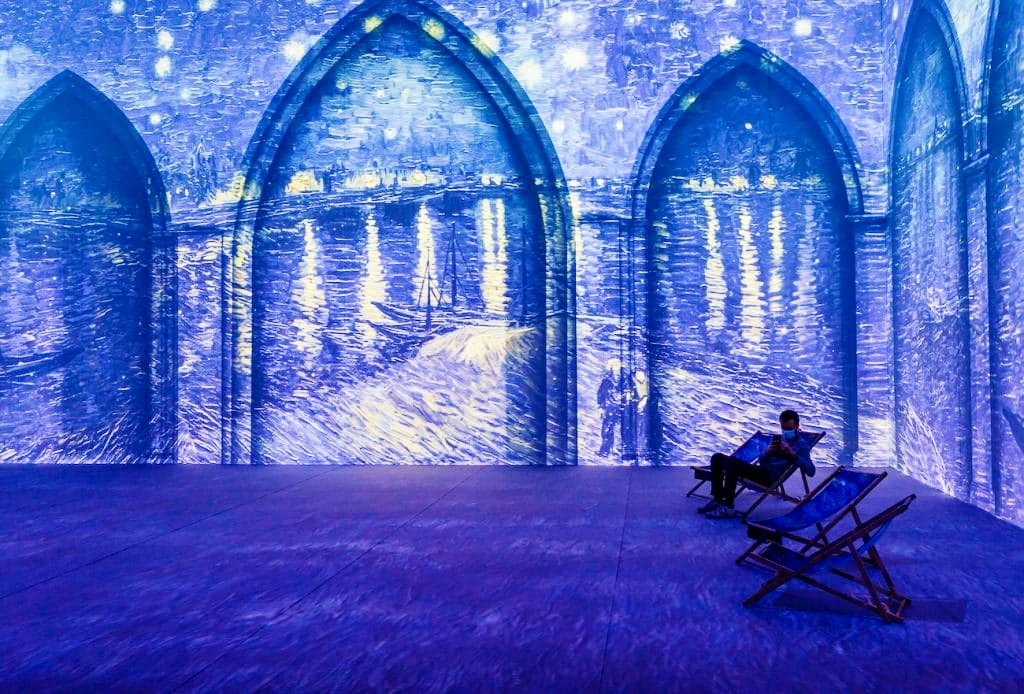
Sponsored by Timothy James, their love of art, made Van Gogh Alive a reality, determined to bring high-concept art to the masses. Despite offering financial planning services, their love of money didn’t mean that they weren’t art buffs themselves. They were proud to be the official sponsors of the Van Gogh Alive-The Experience in London, and relished how Van Gogh’s life, background, and incredible art was up on display in the heart of London itself. And they weren’t the only ones. A was so glad that she had the chance to express how much she adored art, with her partner having an eye-opening insight into art history, Van Gogh, and the connection between mental health and art. After all, art was beautiful, art was poignant, and art was education. No matter who you were, or where you were from, art helped you look outside your bubble, and discover new, fresh perspectives.
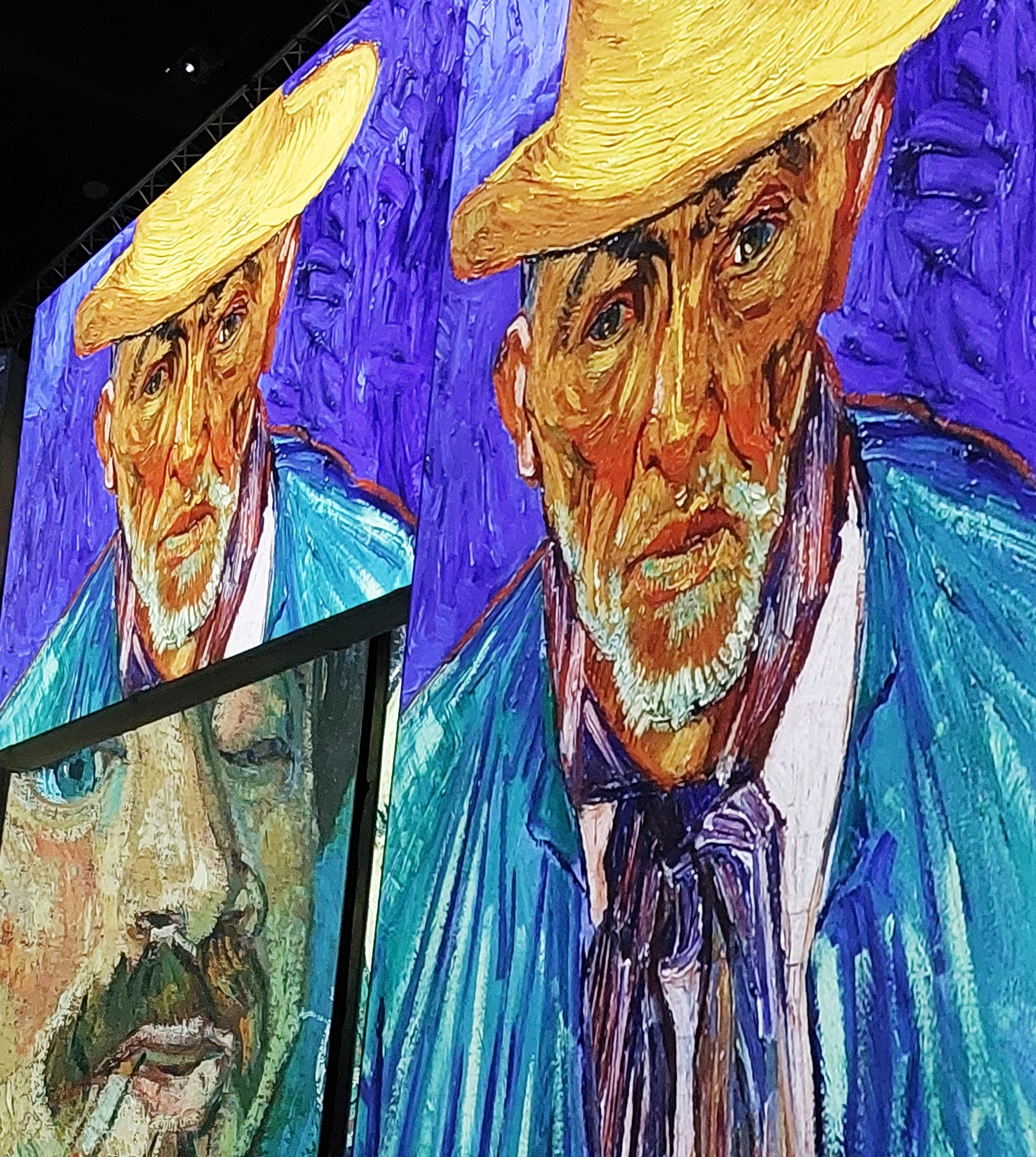
As they entered the pavilion, they were seduced by the Almond Blossom walls that paid homage to one of Van Gogh’s most infamous works. Located in the ‘interpretative area’, the couple danced joyfully by the beautiful ‘Almond Blossom’ wall, outsiders looking on whimsically. Almond Blossoms was an infamous classic, a painting that was a gift for his beloved brother Theo and his sister-in-law Jo. They had a son who had just born, Vincent William, named after Van Gogh. Touched, Van Gogh felt joy, during a period where he was in and out of mental health institutions, astute poverty, and breaking down. Borrowing the subject, bold outlines, and the positioning of the tree in the picture plane from Japanese printmaking, Almond Blossom was incredibly poignant. Light pastel colours added a sense of calm and tranquillity that were often not seen in his other paintings, which were often brash, bold, and turbulent. Here was peace at its finest, which made sense given how much Van Gogh loved nature.
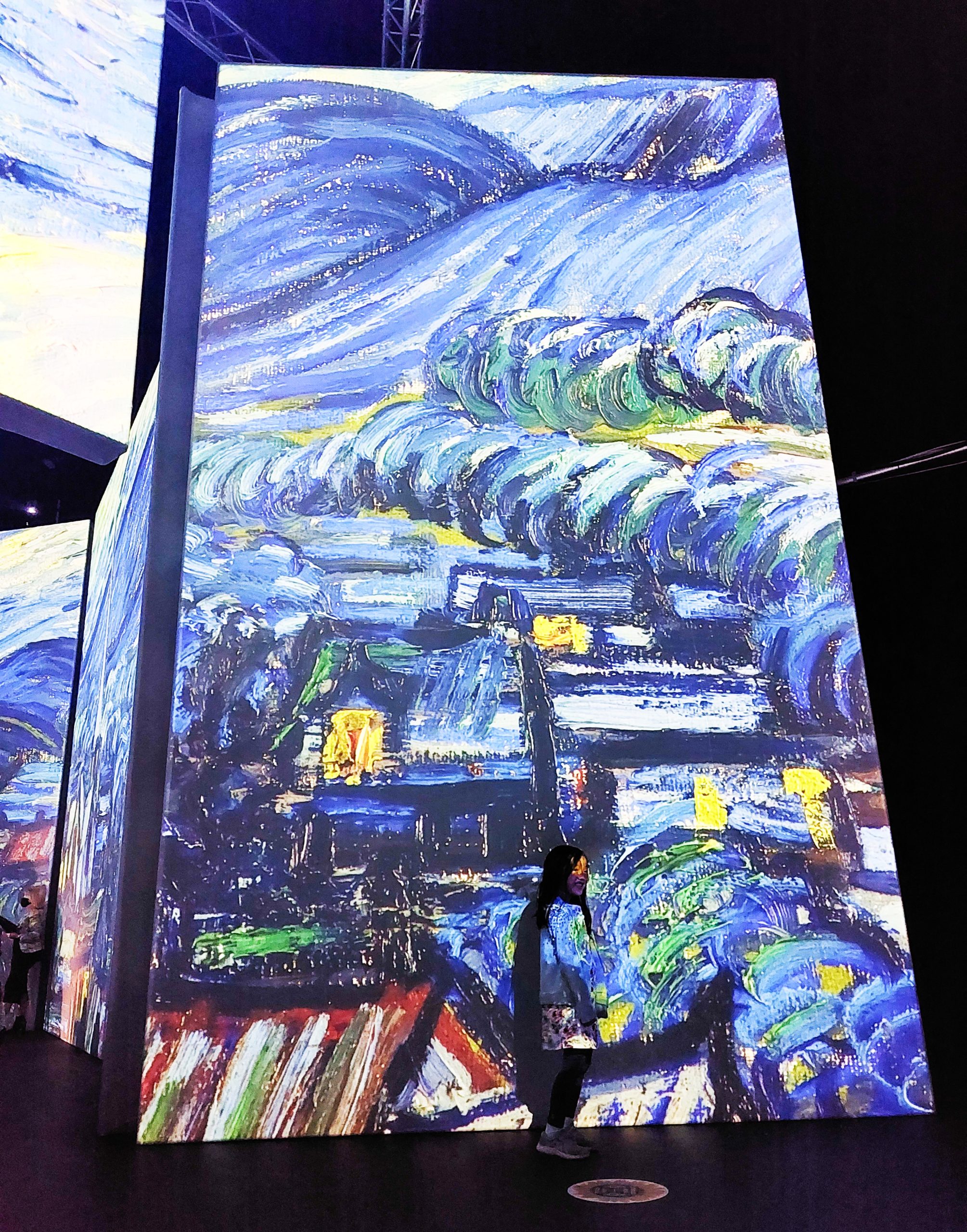
A too, was a fan of nature, crisp autumn walks under trees with falling burnished orange leaves. The scent of spring as bright yellow daffodils crept into fields merrily, summer berry picking evoking childhood nostalgia. Even in winter, when the air was laced with frost, there was beauty, fluffy white snow enveloped around bare wizened trees, whoops of laughter from pink faced children making snow angels underneath. Yes, A understood why Van Gogh cared so deeply about nature, why it made him feel calm and at ease. It was unsurprising therefore that ‘Almond Blossoms’ was the most sentimental painting in Van Gogh’s family, that they had held so dearly to their hearts.
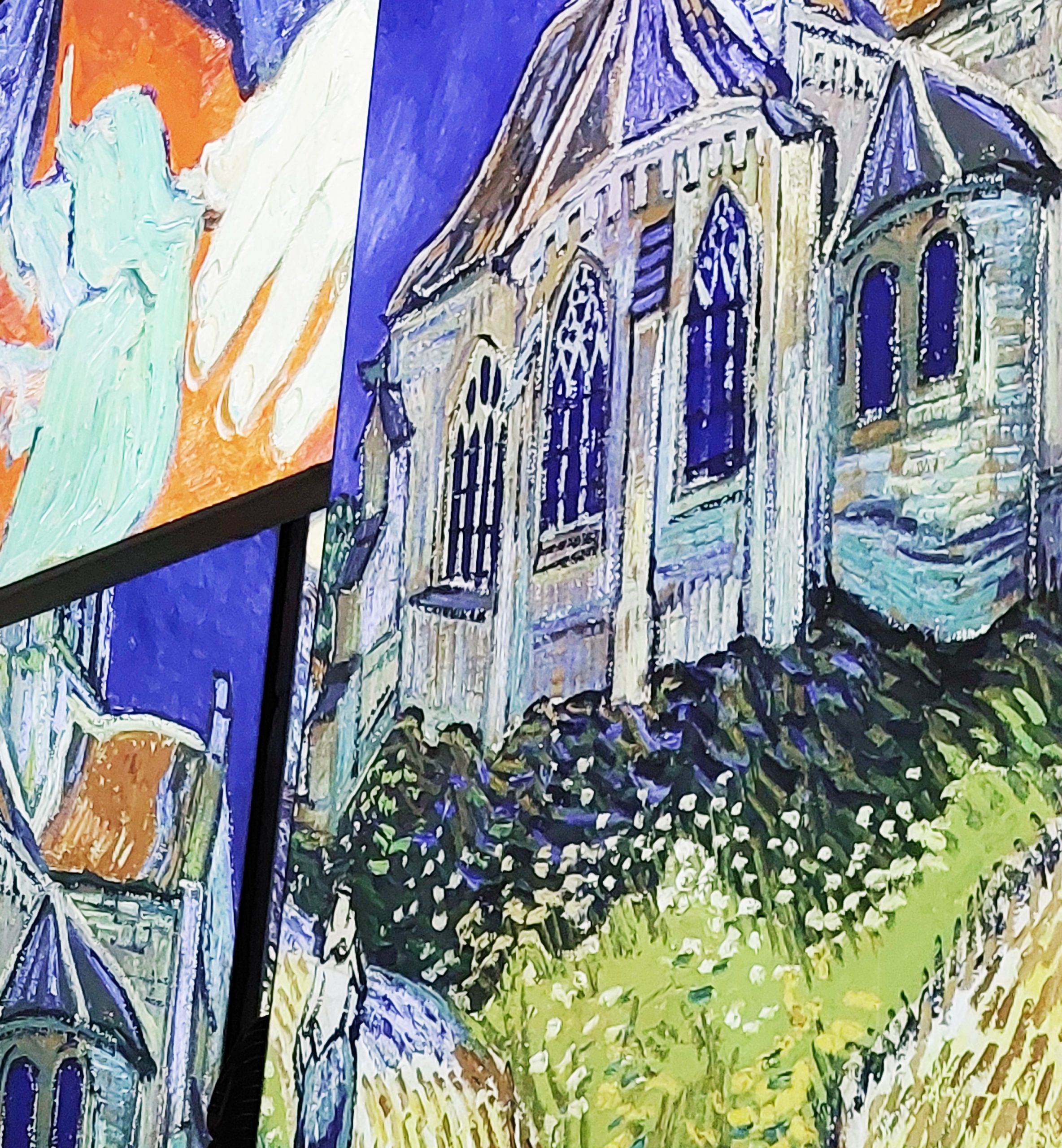
As the couple wandered around the interpretative area, they got to know more about Van’s Gogh’s life, his paintings, inspirations, and his untimely demise. Though he only painted for 10 years, his impact on art history was remarkable. From the ‘Starry Night over the Rhone’ to the Bedroom, today Van Gogh’s paintings could fetch up to £100 million in value. But when he was alive, his only painting sold was ‘The Red Vineyard’, brought for 400 francs by Anna Boch in 1888, a dark yet vibrant masterpiece. Painted from memory, and imagination while he was at the yellow house, it was inspired by a local vineyard that was hauntingly beautiful. Painted during his stay with his once-upon-a time friend, Paul Gaugin, he captured the yellow mellowed tones, and the sparkling light of the early evening sun reflecting in the river emotively.
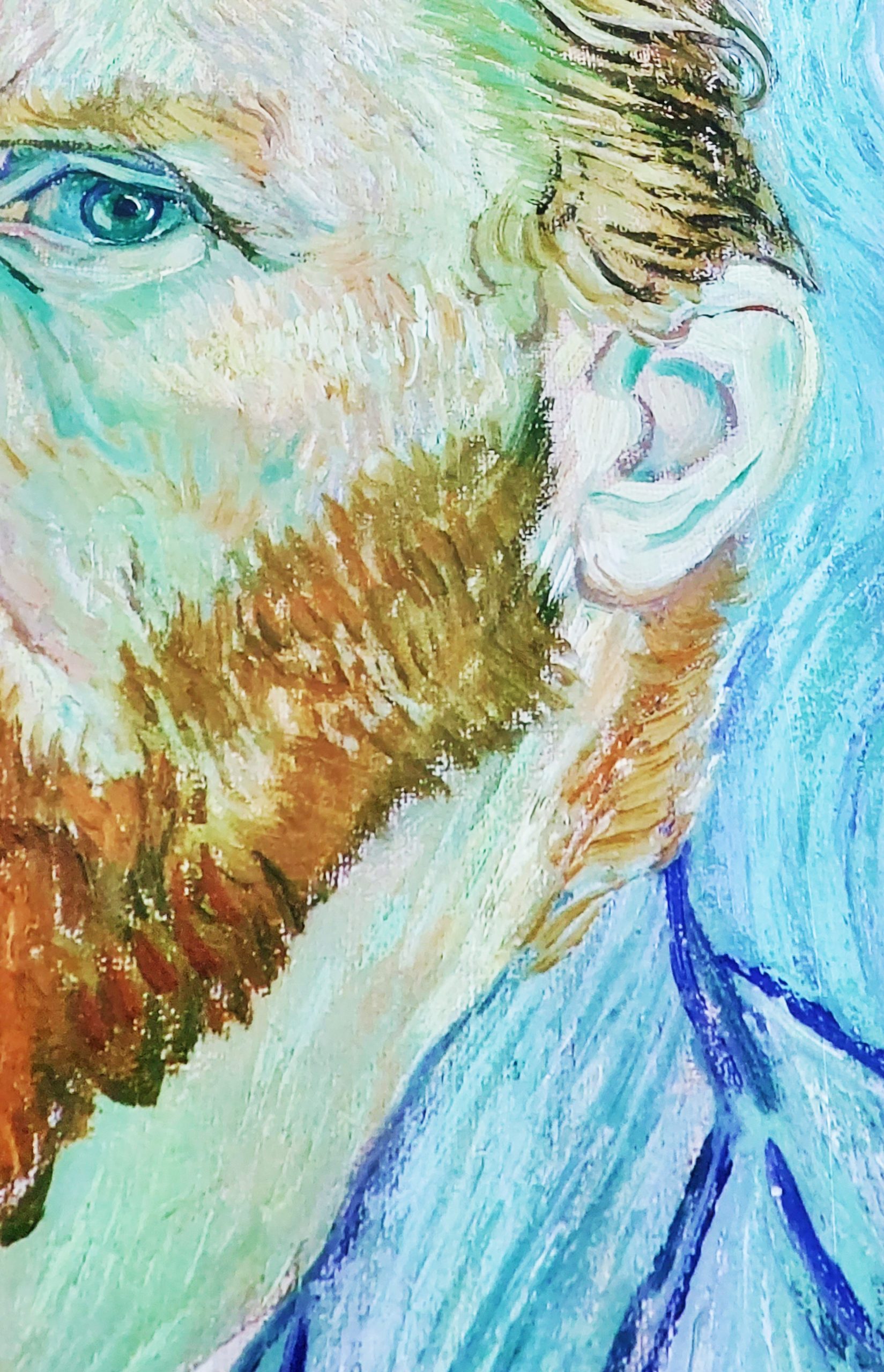
Though it was a masterpiece, A was surprised that Van Gogh’s other more ethereal works like ‘The Starry Night’ wasn’t more popular, when it was so adored in contemporary culture today. To A, this was a romanticized view of the night sky, where the moon hung heavy, an emotional art canvas dominated by vivid blues and bright yellows. It was joyous, sad, and heart-breaking, a plethora of interpretations where Van Gogh had altered celestial shapes and added a sense of glow. With Venus at centre left, Van Gogh’s grasp of mood, expression, symbol and sentiment, was nothing short of breath-taking. In fact, A caught her breath, this was a painting that made her feel, emotions washing over her in a cathartic cleanse. Painted during his time at the Saint-Paul-de-Mausole asylum in Saint-Rémy, in southern France, A imagined how he must have felt, when he was recovering. After all mental health, wasn’t as acknowledged, and accepted as it was today. Like writing, art was a therapeutic medium that helped Van Gogh deal with his demons, even if he was struggling.
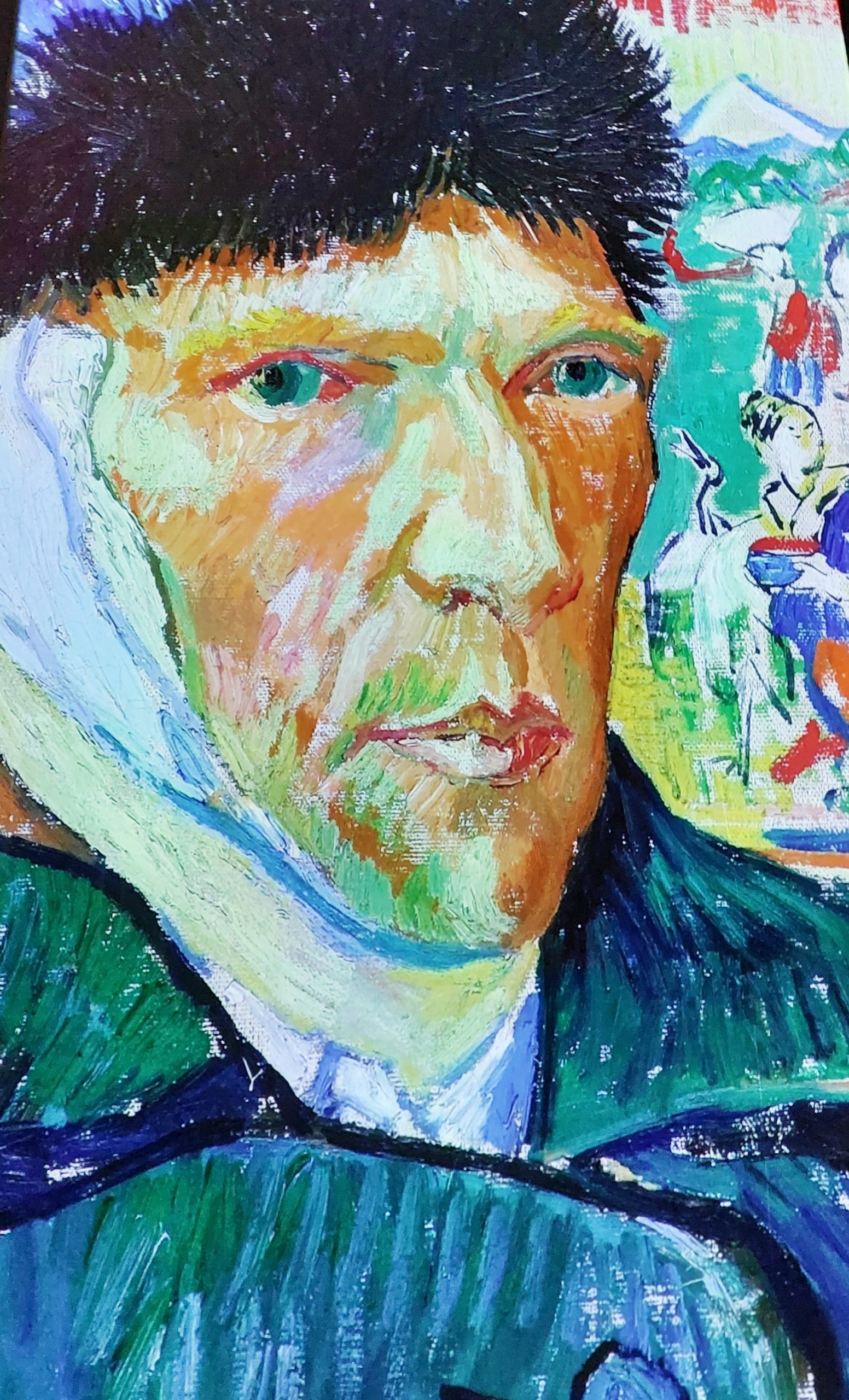
Visitors too were temporarily mute, overcome by Van Gogh’s story, and how he came to be. When A’s partner found out that he had committed suicide, he was visibly shaking. A man aged 37, still in his prime, penniless, and drowning in poverty. If only he had lived to have seen the success that he had mastered today, one of the most instantly recognizable artists in modern times. When A asked D, what his favourite Van Gogh painting was, his answer was surprising. He replied, ‘Sunflowers on Blue’, the third painting in Van Gogh’s sunflower series. Representing the different stages in the sunflower’s life cycle, from young bud through to maturity and eventually decay, A realized why D liked it. Beyond sunflowers being beautiful, it also demonstrated the cyclical nature of our lifespan, as we are born, we live, we die. What should have been a haunting painting is self-assured, matter of fact, and eternally optimistic. Unlike the melancholy of paintings like ‘The Starry Night’ the sunflowers were shrouded in hope. Perhaps of what was yet to come.
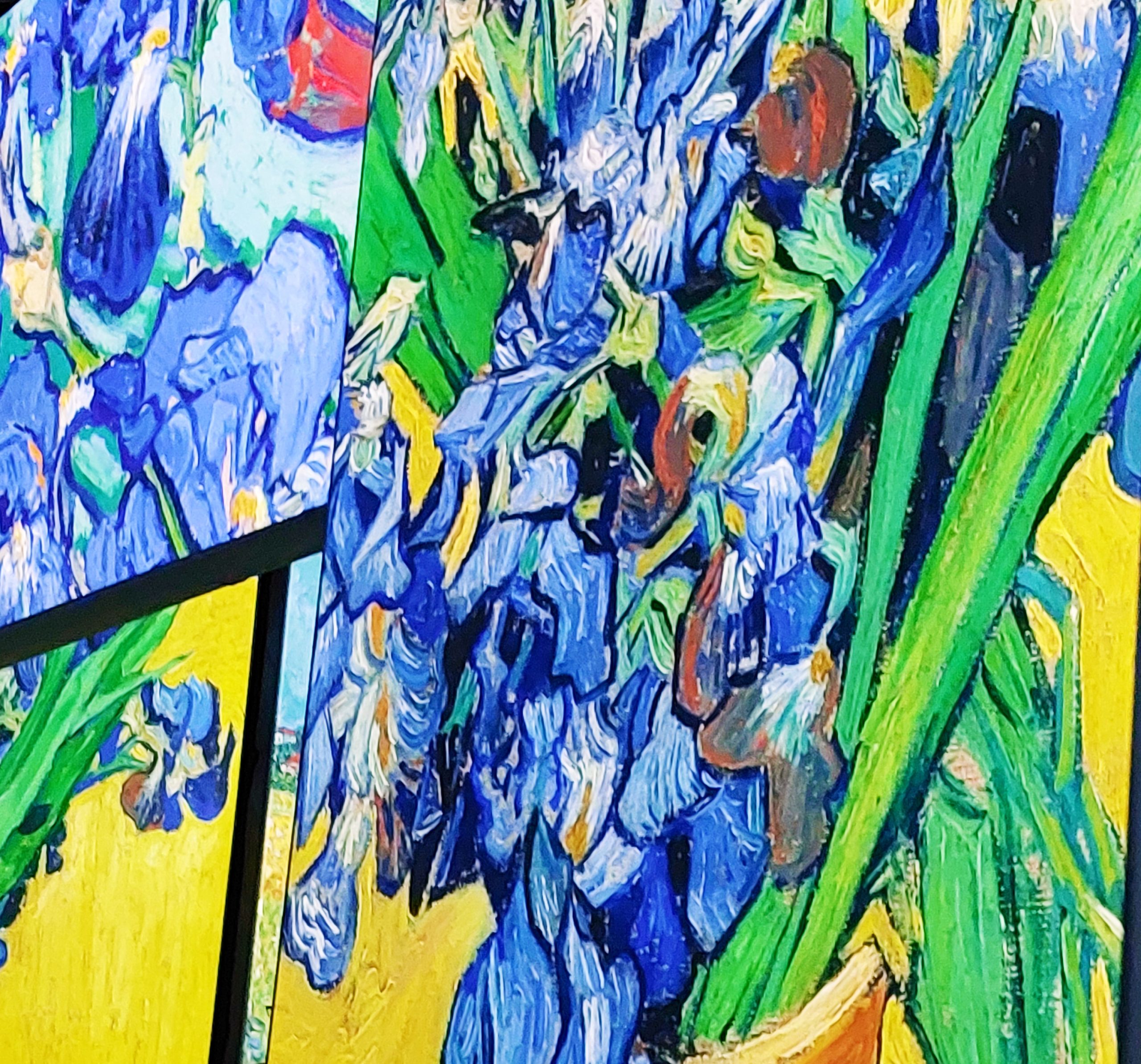
When D asked the same question in return, A struggled to answer. She loved ‘The Starry Night’ and ‘Almond Blossoms’, but ultimately it was the Van Gogh Self Portrait (1889), that she connected with the most. Why? Because it was a critical exploration of personal realization and aesthetic achievement, which had fervour and urgency. During his stay at the asylum at St.-Rémy, he suffered another collapse and remained confined in his room for more than a month, not even venturing into the garden. When he was able to paint again, this was the first canvas he made, apparently in a single sitting. To A, this represented bravery, determination, and a fighting spirit. She knew from personal experience that creativity was often an anchor for wounded souls and dealing with mental health issues was no different. After all Van Gogh himself said that his ‘work could restore his health’, painting self-portraits to mark his identity, as a painter.
What was so poignant though, is how poorly he looked. His green tinged face was striking against his russet hair, but it was a reminder of the fragility of his life. Here he was, in his last years, struggling with mental health, but so determined to get better. The painting was dark, but it was also vibrant, one of the last paintings he did before his death. The restless, urgent, almost raw brushstrokes made sense, an ode to feeling restless, like you don’t belong in your own skin. When you get anxious, it’s like you are alien to your own senses, overcome by the need to escape, and be someone else. As they moved out of the interpretative area, their attention was caught by a reproduction of Van Gogh’s painting ‘ The Bedroom’. To some, it was just a bedroom, a place to sleep, a place to stay. But to us it was magical, a life-sized version of Van Gogh’s ‘The Bedroom’, one of his most famous paintings.
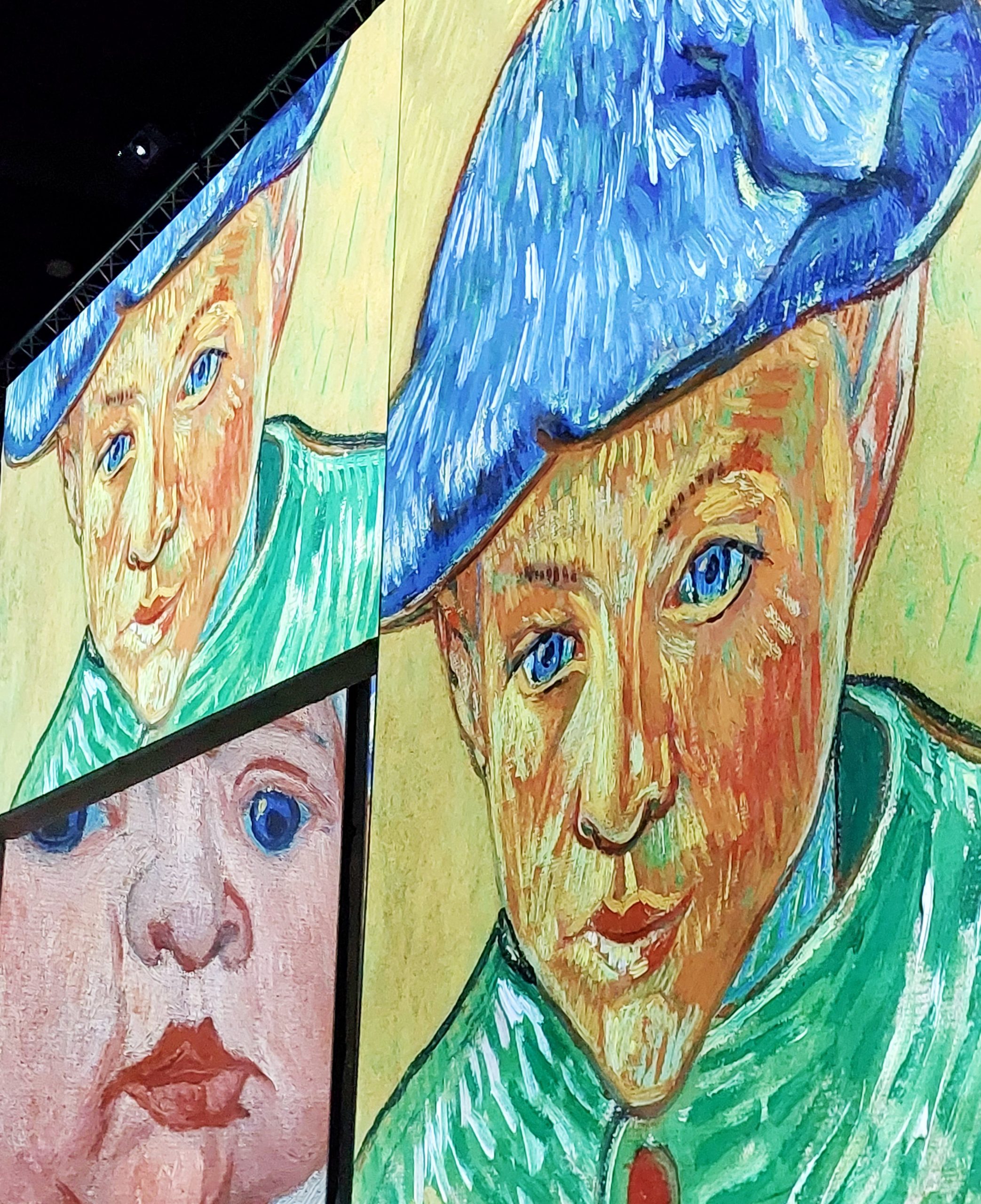
To get the chance to experience that in person, was almost humbling. Here ‘The Bedroom’ was in all its glory, painted in October 1888. After his move to the Yellow House in Arles, France, he was inspired to create a painting of his bedroom. It was the first time he had a bedroom of his own and painted a suite of canvases to fill the walls. He was so moved by his ‘first bedroom’, that he was inspired to create two more versions. One that was almost identical, and the other on a smaller canvas, made as a gift for his mother and sister. Arguably the original was the most exceptional, the walls a pale lilac, juxtaposed with chrome yellow chairs, a faded red floor, and a green window. It was almost whimsical, and yet, there seemed to be a raw, unharnessed energy here, an unravelling of emotions. Here was a hidden turmoil, that would be manifested a lot more strongly in later paintings. To see it in the flesh made Van Gogh Alive a must-see experience, for the staged bedroom alone. Its simplicity radiated magnificence.
And yet, there was something even more magnificent waiting for us in the Sensory4 Gallery, we could hardly believe it. It was an immersive experience like no other, bathed in chrome yellow and cobalt blue. Flaming red and apple greens, muted browns, and letter etchings, set to an evocative classic score, that transported you into Van Gogh’s paintings, as those you were there with him. A and D didn’t talk much during this segment, they didn’t need to. For they were awed, mesmerized as paintings, images and letters popped up on screen, swept into a narrative of colour, texture and prints. They watched young kids twirling excitedly under the ‘Starry Sky’, bedazzled by a floor that was littered with stars. As they looked up, they exclaimed with delight, the screens shifting rapidly, Van Gogh’s art flashing before their eyes.
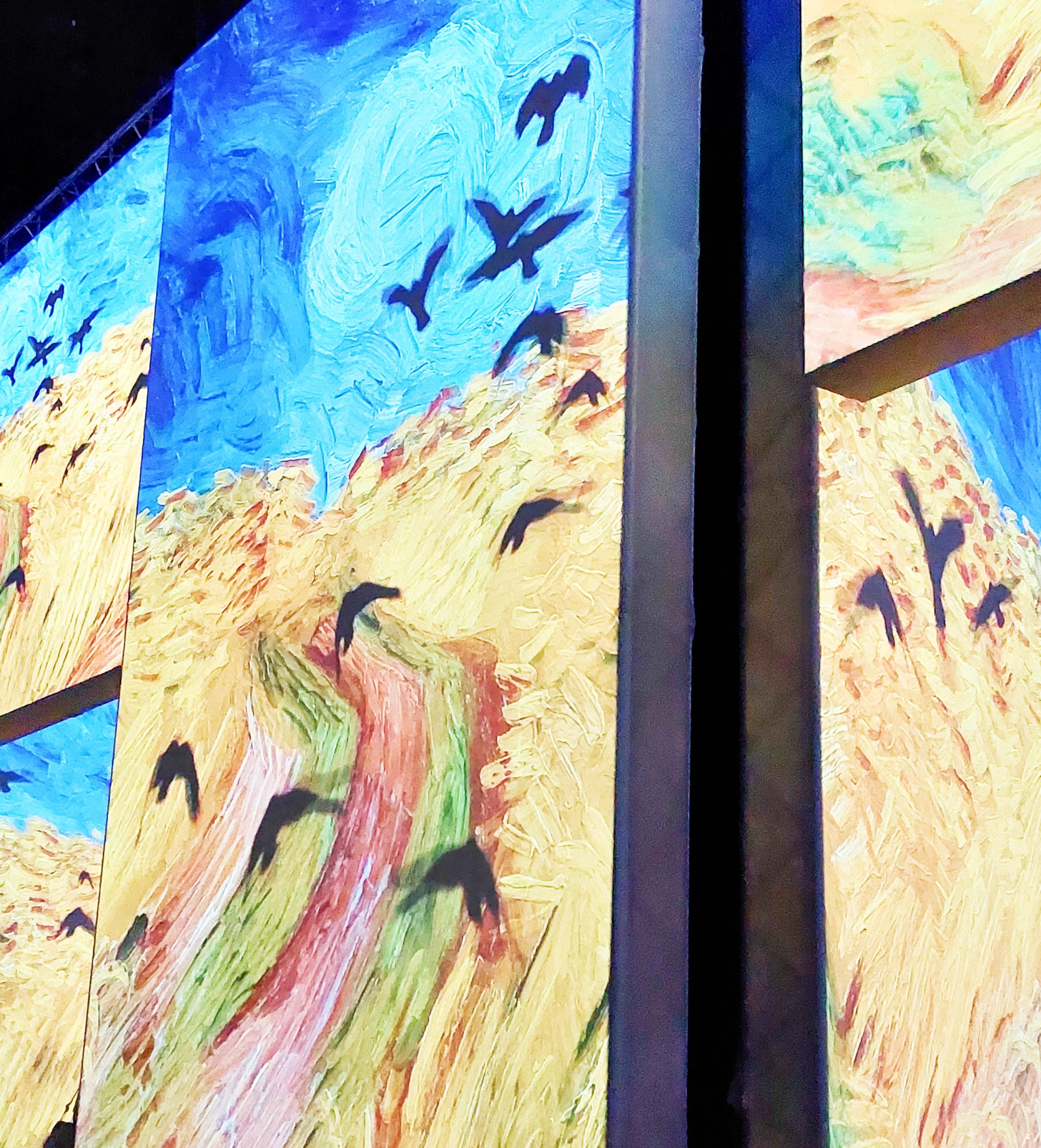
Focusing on the fantastically productive period between 1880 and 1890, Van Gogh’s art was nothing short of spectacular. From lesser-known works like Road with Cypress and Star, Pere Tanguy and Gaugin’s Chair to infamous masterpieces like ‘ Starry Night over the Rhone’, Van Gogh Alive, brought them to life. It wasn’t like the garish holograms often used for deceased musicians, but a way of honouring his memory respectfully. They sat in silence; this was so different to anything they had experienced before. At Van Gogh Alive you didn’t just look at his paintings, you stepped inside them and felt their power. Some paintings had even been animated, adding to their dynamism, with selected quotes from Gogh’s letters projected too. Much to most people’s surprise, Van Gogh wasn’t just an artist, but he was also a talented writer, as seen from his letters to his brother Theo. A in particular appreciated that he was a linguist, as well as an artist, because writing was just as much an art form, as art was.
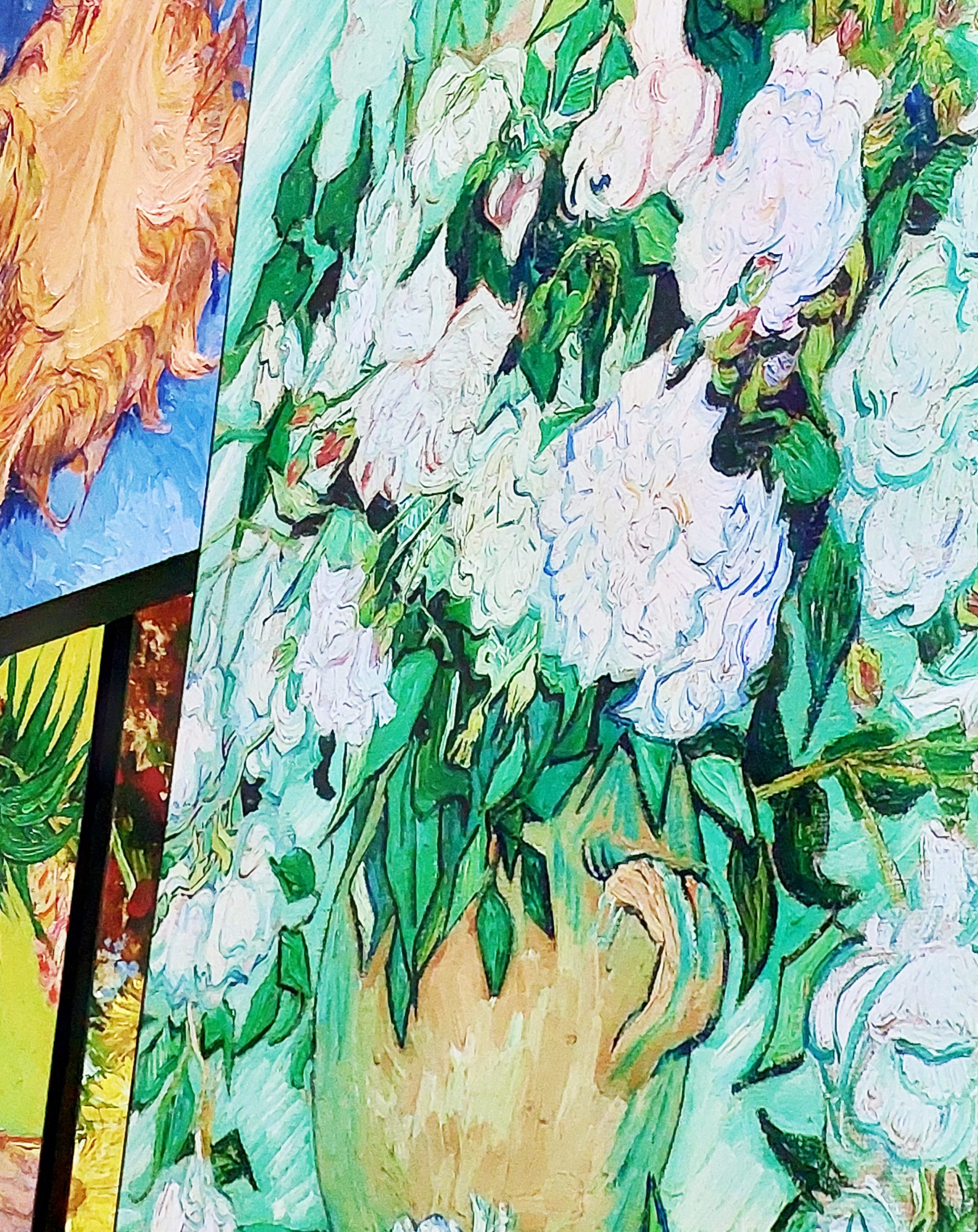
It was nice to see that lesser-known works were catapulted into the spotlight, with A’s eye on Pere Tanguy (1887) in a classic Van Gogh colour palette. It was a portrait of Julian Tanguy, the owner of a small paint shop in Paris, whose friendship he valued enormously. Placed against a backdrop of Japanese seasonal scenes and costumed figures, it was a painting like no other. In the painting style of Neo-Impressionism, he paid homage to the shopkeeper’s kindness, and modesty, with his hands clasped against his stomach. Searching gentle eyes, and an almost vague expression made him lost in thought, while the contrasting complementary colours, were striking. To A, the painting hadn’t been given the recognition that it had deserved, a colourful, joyful yet solemn portrait of a man he valued highly. One of 35 self-portraits, he went on to paint three portraits of Pere Tanguy in total.
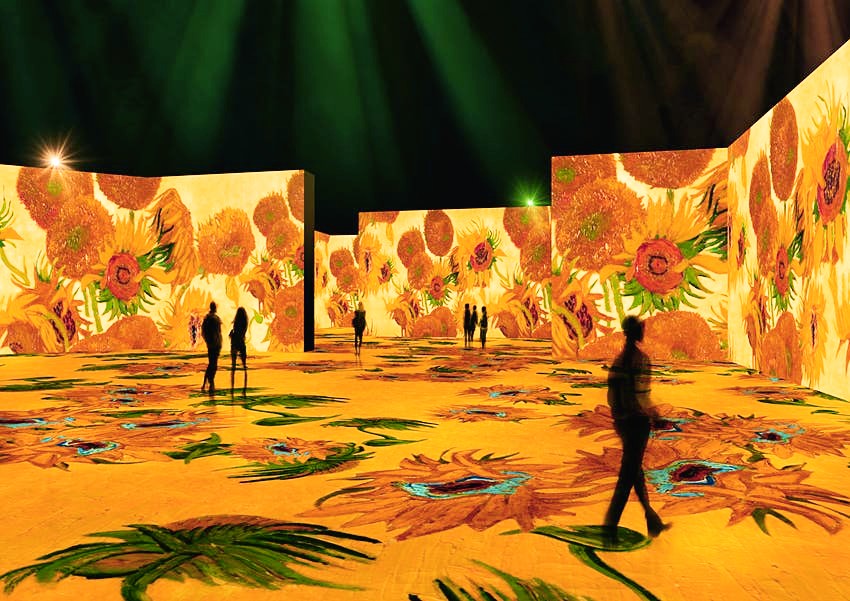
When their time in the sensory gallery had come to an end, and the screens had turned pitched black, they found one more surprise in store. An immersive sunflower room, complete with hundreds of sunflowers was beautifully curated. The mirrored room was bathed in an orangish yellow clandestine light, faux sunflowers the perfect backdrop for an Instagrammable selfie. Like the rest of the exhibition, it was a modern celebration of Van Gogh’s art in the digital age. Combining technology, social media and aesthetics, the sunflower room was able to teach a new generation about the beauty of Van Gogh Alive, in a fun and vibrant way. In her eyeline she could see the strangers around her, having as much fun as she did, giggling and laughing, as they posed in the mirror. There was after all something so joyous and fun about sunflowers, a flower Van Gogh held so dearly in his heart.
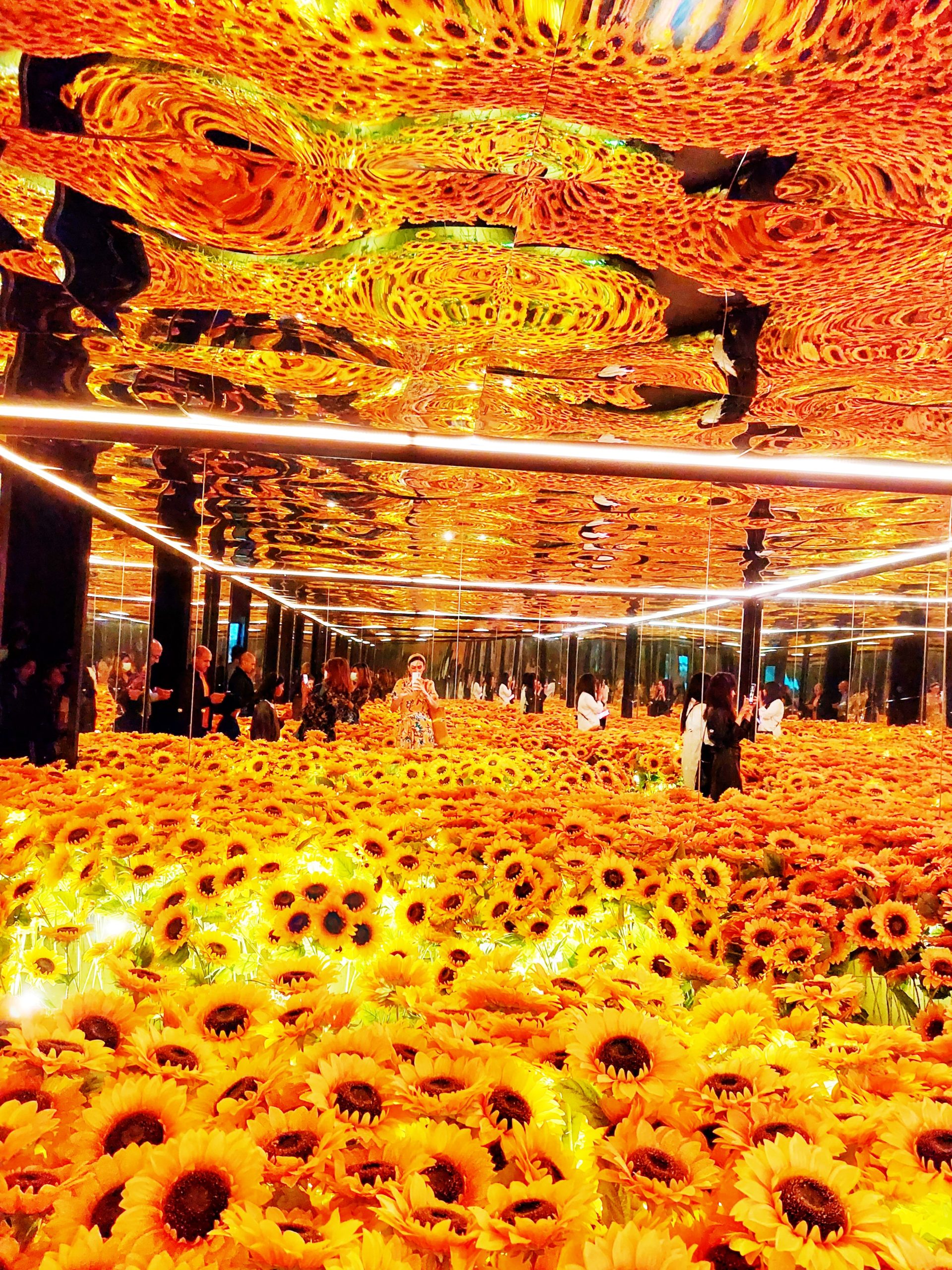
Van Gogh’s paintings of Sunflowers are among his most famous. He did them in Arles, in the south of France, in 1888 and 1889. To him, they represented gratitude, and held special significance. Painting a total of five large sunflower canvases, the paintings were eloquent, impressionable, and above all, thoughtful. Because that was Van Gogh down to a T, an artist whose paintings were deliberate, well-thought out, and unmistakeably him. He put so much of himself into the paintings that he created, that it was almost hard to not view them as a personal diary of his life. In some ways they were. Like words that would leap off the page, brush strokes jumped out at you, imploring you to dig a little deeper. If you looked beyond the norm, you would find the real Van Gogh, the Van Gogh whose spirit exists until this day. The couple realized something quite exponential. As they left, and breathed in the fresh air, they remembered in life we should always be more Van Gogh. Why? Because he was always unapologetically himself.
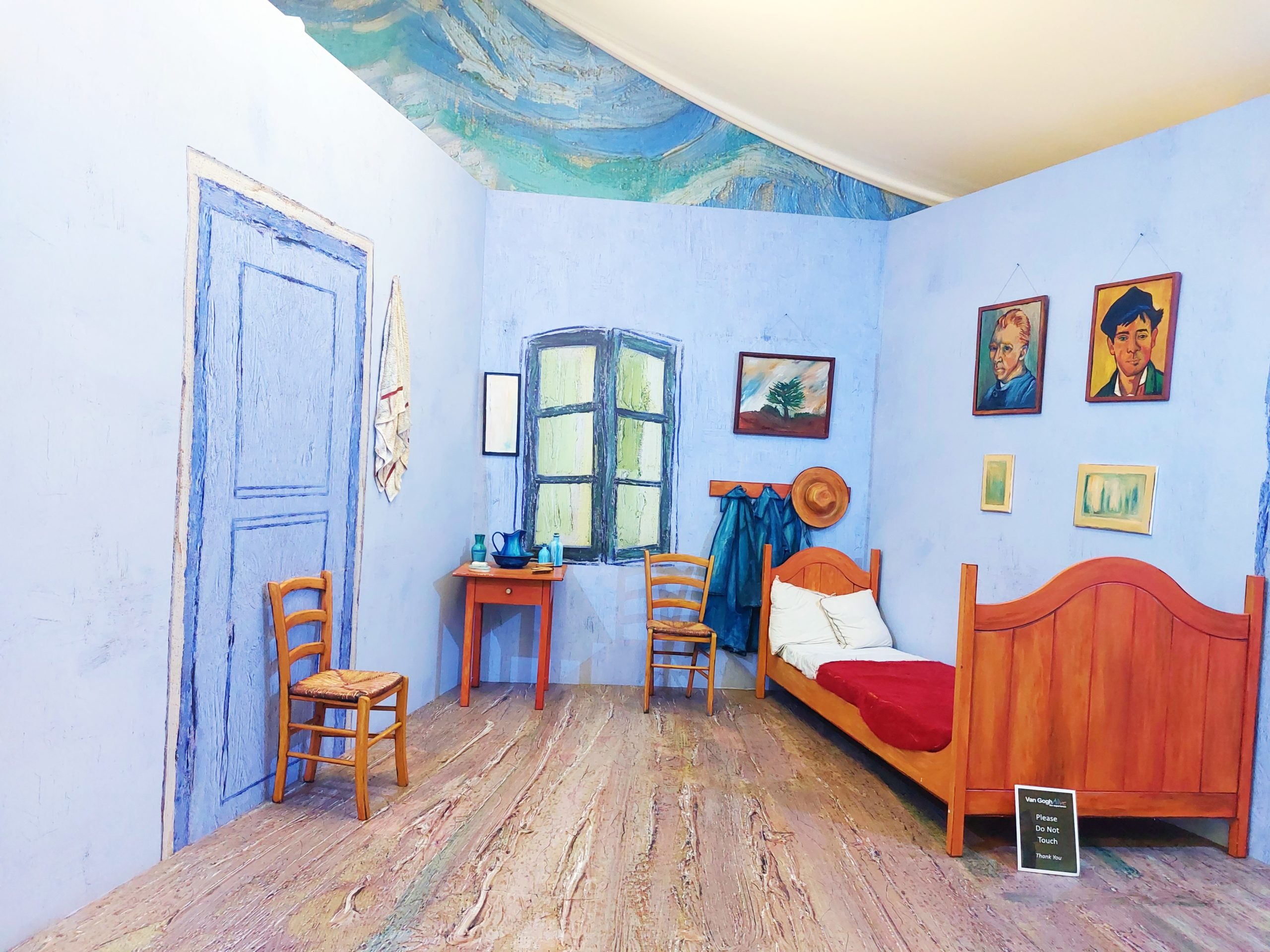
Have You Been To The Van Gogh Alive Experience?
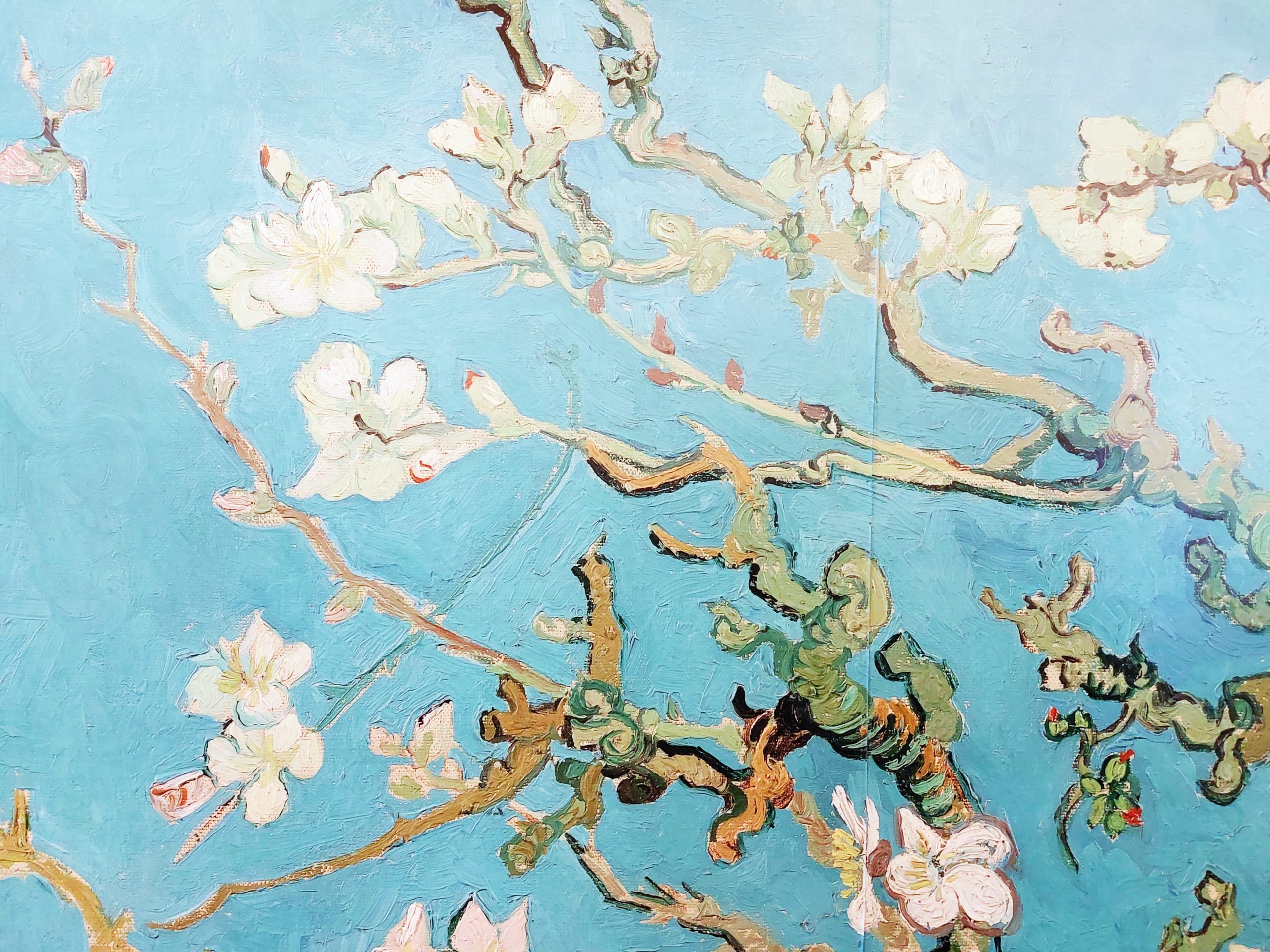
*Disclaimer
Please note this is a collaborative post, but all thoughts are my own and are not affected by monetary compensation. I would love to know whether you are a fan of Van Gogh, and if you have been to the Van Gogh Alive exhibition? What are your thoughts?
I love Van Gogh so much! I have been to the exhibition in Amsterdam, where they had a light show (in a dark room) to show how his mind worked, and it had a room full of glass sunflowers that would change colour according to the voice recording of quotes by Van Gogh! It was truly spectacular!
This exhibit looks amazing! Van Gogh is my favorite. Can’t wait to see it 🙂
What a dreamy experience! I’ve done the immersive Van Gogh exhibit in Atlanta, but I think it’s by a different company. I would love to see all the different immersive experiences to compare them.
How did I not know this was a thing???? This is definitely on my bucket list now. How amazing!
I so wish I could go to one of the Van Gogh exhibits!
The exhibit is so amazing and Van Gogh is my favourite. Can’t wait to see it